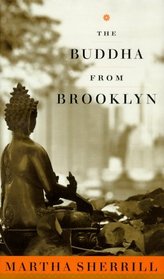Search -
The Buddha from Brooklyn
The Buddha from Brooklyn
Author:
In 1985, Catharine Burroughs was a Maryland housewife with two children—and two failed marriages behind her—running a New Age prayer group in her basement. Out of the blue, a monastery in India for which she had raised some money contacted Burroughs and asked her to host His Holiness Penor Rinpoche, one of the highest-ranking lamas o... more »
Author:
In 1985, Catharine Burroughs was a Maryland housewife with two children—and two failed marriages behind her—running a New Age prayer group in her basement. Out of the blue, a monastery in India for which she had raised some money contacted Burroughs and asked her to host His Holiness Penor Rinpoche, one of the highest-ranking lamas o... more »
ISBN-13: 9780679452751
ISBN-10: 0679452753
Publication Date: 4/18/2000
Pages: 416
Rating: 3
ISBN-10: 0679452753
Publication Date: 4/18/2000
Pages: 416
Rating: 3
4.3 stars, based on 3 ratings
Genres:




